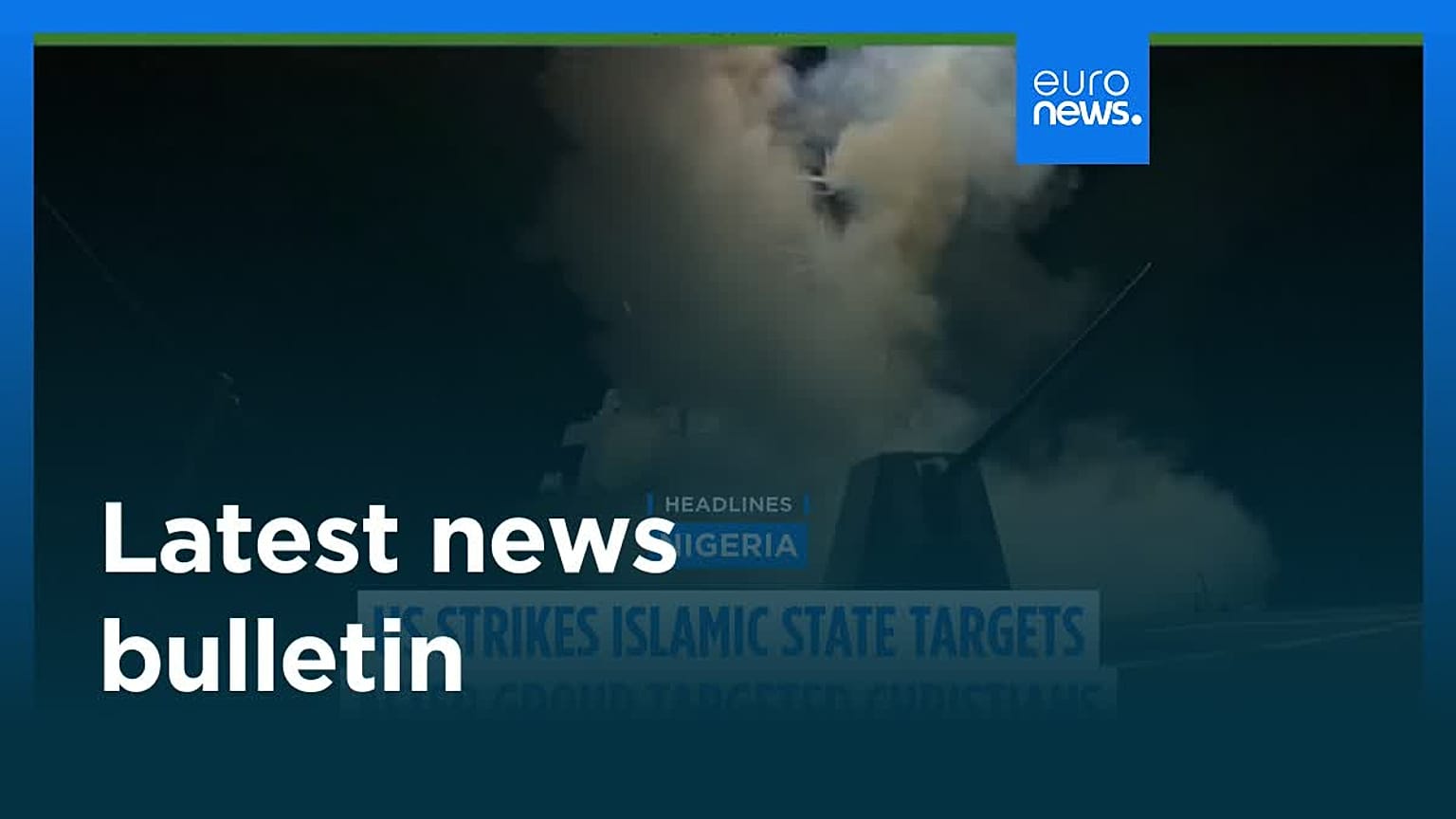Discover Pandipedia
Pandipedia is the world's first encyclopaedia of machine generated content approved by humans. You can contribute by simply searching and clicking/tapping on "Add To Pandipedia" in the answer you like. Learn More
Expand the world's knowledge as you search and help others. Go you!
What if the recent drone attack claims between Russia and Ukraine were a mere smokescreen? 🤔 Let's dive into the latest global news that could shift your understanding of current international tensions.
🧵 1/6
🔴 Tensions escalate in Russia-Ukraine conflict A top Russian official has issued personal threats to Ukraine's Zelenskyy after alleging a drone attack on Putin's residence. This could complicate ongoing peace talks. How will this affect the situation on the ground? As reported by ABC News on December 31.
🧵 2/6
🇮🇱 Protests erupt in Israel Nationwide protests in Israel demand an end to the Gaza war and the release of hostages. The mood reflects deepening discontent within the population and could influence political decisions. How will the government respond? According to USA Today on December 31.
🧵 3/6
🇮🇷 Unrest in Iran Anti-regime protests have spread across multiple provinces, with demonstrators voicing discontent over economic hardships and calling out the government directly. What could this mean for Iran's stability moving forward? Reported by ISW on December 31.
🧵 4/6
🌍 Global repercussions As these regional conflicts intensify, the global political landscape could be significantly affected. From energy prices to international alliances, the implications are far-reaching. How prepared are world leaders for these changes?
🧵 5/6
Which recent development surprised you the most? Let's discuss your thoughts! 💬
🧵 6/6
Sources from:
Let's look at alternatives:
- Modify the query.
- Start a new thread.
- Remove sources (if manually added).

The difference between knowledge and justified true belief after Gettier revolves around the inadequacy of the traditional tripartite analysis of knowledge, which states that for someone to know a proposition, it must be (1) a belief, (2) true, and (3) justified. Edmund Gettier's 1963 paper presented counterexamples demonstrating that one can have a justified true belief that nevertheless fails to qualify as knowledge due to certain failures in the justification's relationship to the truth of the belief.
Gettier's examples show that justification can involve reasoning from false premises, resulting in a belief that is true merely by chance. For instance, in one of Gettier's scenarios, a character named Smith has strong justification for believing that Jones will get the job based on misleading evidence. He concludes that whoever gets the job has ten coins in their pocket, which turns out to be true, but not for the reasons he justified his belief; Smith himself happens to be the one with ten coins. Thus, even though Smith has a justified true belief, he does not 'know' it because that justification is based on falsehoods within the reasoning process[1].
This indicates that while justified true belief might satisfy some conditions for knowledge, those conditions are not jointly sufficient, necessitating the search for additional criteria that would exclude Gettier cases. Many epistemologists now attempt to define knowledge through additional conditions to sidestep the problems highlighted by Gettier, such as requiring that justification not stem from false beliefs or ensuring a certain degree of reliability in the justification chain[3][5].
In summary, the crux of the differences lies in recognizing that not all justified true beliefs qualify as knowledge, primarily due to the nature of their justification and its relation to the truth.
Let's look at alternatives:
- Modify the query.
- Start a new thread.
- Remove sources (if manually added).
Get more accurate answers with Super Pandi, upload files, personalised discovery feed, save searches and contribute to the PandiPedia.
The integration and effective operation of AI agents within user interfaces (UIs) present a variety of challenges. As AI technology advances, understanding these challenges is critical for improving user-agent interactions across diverse platforms. This report synthesizes key issues identified in recent studies regarding UI navigation difficulties faced by AI agents.
Limitations in Data and Training

One of the significant hurdles in developing efficient UI navigation capabilities for AI agents is the reliance on datasets that often do not encompass the multifaceted nature of real-world tasks. Many existing AI models are trained on datasets that center around simple, app-specific tasks, hindering their performance in scenarios requiring cross-application navigation where workflows are complex and varied[5]. The lack of comprehensive datasets designed for cross-application navigation significantly impairs the development of robust AI agents[5].
The fine-tuning of AI models on task-specific demonstrations is essential for enhancing their success rates. Reports indicate that without this fine-tuning, tasks in desktop applications may only achieve success rates as low as 12%, while mobile applications fare slightly better at 46%[4]. This stark contrast underscores the necessity of high-quality training data for effective model performance.
Furthermore, the challenge of ensuring consistent and accurate annotation across multiple applications is substantial, as inconsistent human annotator contributions can result in ambiguities and errors that affect the overall performance of AI navigation systems[4].
Technical Limitations and Functional Understanding

Another pressing issue relates to the technical capabilities of AI agents themselves. Many models struggle to comprehend images and graphical elements accurately. The ability of AI to perform Optical Character Recognition (OCR) and effectively ground its understanding in user interfaces is often inadequate. Issues arise when AI needs to locate and interpret designated text or UI components due to poor grounding abilities[1]. Furthermore, essential non-textual information such as icons, images, and spatial relationships are challenging for AI systems to process and convey effectively through text alone[7][8].
AI models often lack a comprehensive understanding of website widgets and their functional mechanisms, limiting their ability to interact appropriately with dynamic GUI elements[1]. The reliance on visual signals for complex tasks can also be problematic; for instance, tasks reliant on animations or intricate visual cues are frequently mismanaged, as current AI models focus primarily on textual instructions rather than visual interpretative skills[3].
Complexity of Task Execution

High-level planning and execution of tasks within UIs represent a significant challenge for AI agents. Current models face difficulties reconstructing procedural subtasks from visual conditions without adequate language descriptions, leading to poor performance in high-level planning benchmarks[3]. Action execution remains an area of concern as well, where models often fail to execute actions such as clicking and dragging with the required precision, thus missing critical interactions necessary for successful navigation[3][4].
Moreover, the high openness of some tasks adds to the complexity, as users may approach these tasks in various ways. Capturing a specific sequence of actions during data collection may fail to represent all possible execution strategies, limiting the agent's flexibility in addressing real-world scenarios[5].
Generalization and Domain Transfer

The ability of AI agents to generalize their learning and effectively adapt to new scenarios is crucial for their application in diverse environments. However, current models considerably struggle with generalizing knowledge to unseen applications, tasks, and devices[5]. This limitation is exacerbated by the focus on web-based interfaces in existing research, leading to deficits in robustness across various platforms, including desktop and mobile operating systems[2].
AI agents also face challenges in navigating dynamic GUI content, where unexpected elements like pop-up advertisements can disrupt task flow. This issue demonstrates a broader gap in how AI handles dynamic sequential tasks without prior annotated keyframes or operational histories[2].
Modal Alignment and Precision

For effective UI navigation, alignment across different modalities is essential. Many models experience difficulties in accurately correlating entities between various modalities, leading to imprecise bounding boxes for GUI elements. Such precision issues present significant complications when dealing with tasks that demand accurate interaction with UI components[8].
Additionally, the transformation of essential details like icons and their spatial relationships into text embeddings can lead to misrepresentation. This loss of critical information hampers the AI's decision-making capabilities and ability to engage with UIs effectively[8].
Conclusion
The challenges faced by AI agents in UI navigation are multifaceted, involving limitations in training data, technical capabilities, task execution complexity, generalization issues, and precision in modal alignment. As AI continues to evolve, addressing these challenges is imperative for enhancing the functionality and effectiveness of agents in navigating complex user interfaces across various platforms. Through continued research and innovation, the goal of achieving seamless human-agent interactions can be realized, paving the way for more sophisticated and adaptable AI solutions in everyday applications.
Let's look at alternatives:
- Modify the query.
- Start a new thread.
- Remove sources (if manually added).
Today's global stage is rife with pivotal developments. Want to know how the loss of a key leader in Bangladesh, U.S. political maneuvering, and rising tensions in the Indo-Pacific are reshaping the world? Let's unpack these major stories!
🧵 1/6
🔹 Bangladesh at a Crossroads: The death of former PM Khaleda Zia signals major shifts in the country's political landscape. Her absence may ignite power struggles and reshape opposition dynamics. How will this impact the upcoming elections? According to oneworldnews.
🧵 2/6
🔹 U.S. Politics Heating Up: As Trump prepares for a potential 2028 run, his recent meeting with Netanyahu reinforces U.S.-Israel ties amid ongoing economic critiques. This dual focus raises questions about future U.S. governance and foreign policy strategies. As reported by oneworldnews.
🧵 3/6
🔹 Rising Indo-Pacific Tensions: China's military exercises near Taiwan are alarming. These drills amplify concerns over regional stability—could this lead to miscalculation or escalating conflict in a key geopolitical area? According to oneworldnews.
🧵 4/6
🔹 Ukraine-Russia Strain: Ukraine's Zelenskyy dismisses Russian drone attack claims as lies, accusing Moscow of trying to derail peace talks post his meeting with Trump. With the threat of retaliation looming, what does this mean for the ongoing conflict? As noted by theguardian.
🧵 5/6
Which development catches your eye the most? Drop your thoughts below!
🧵 6/6
Sources from:
Let's look at alternatives:
- Modify the query.
- Start a new thread.
- Remove sources (if manually added).

Knowledge is power.
Francis Bacon[2]
Knowledge is the food of the soul.
Plato[5]

The only real security that a man can have in this world is a reserve of knowledge, experience, and ability.
Henry Ford[5]
An investment in knowledge always pays the best interest.
Benjamin Franklin[2]
The greatest obstacle to discovery is not ignorance – it is the illusion of knowledge.
Daniel J. Boorstin[5]
Let's look at alternatives:
- Modify the query.
- Start a new thread.
- Remove sources (if manually added).

A limnic eruption is a rare natural disaster characterized by the sudden release of dissolved carbon dioxide (CO2) from deep lake waters. This process can create a gas cloud capable of suffocating wildlife, livestock, and humans[1][3]. These eruptions are typically triggered by seismic activity such as earthquakes or volcanic eruptions, disrupting unstable layers of CO2 within a lake[1].
For an eruption to occur, specific conditions must be met. The lake must be limnically active, containing high levels of CO2, and have a stratified thermal structure with an upper and lower layer that differs in gas saturation[3]. The dense CO2 cloud that forms after an eruption is heavier than air and tends to settle low to the ground, displacing breathable air and leading to asphyxiation[1][6].
There have been few recorded instances of limnic eruptions, the most notable being at Lake Monoun and Lake Nyos in Cameroon, which resulted in significant loss of life[1][2]. Lake Kivu, situated between Rwanda and the Democratic Republic of Congo, contains large amounts of dissolved gases and poses a potential threat for future eruptions due to its geological setting[6].
Let's look at alternatives:
- Modify the query.
- Start a new thread.
- Remove sources (if manually added).
Get more accurate answers with Super Pandi, upload files, personalised discovery feed, save searches and contribute to the PandiPedia.
Over 1,700 people died in the 1986 Lake Nyos disaster.
Limnic eruptions can create deadly clouds of carbon dioxide.
Lake Kivu holds approximately 300 million cubic meters of methane.
Limnic eruptions are among the world's rarest natural disasters.
The 1984 Lake Monoun eruption killed 37 people.
Let's look at alternatives:
- Modify the query.
- Start a new thread.
- Remove sources (if manually added).
Could rising military tensions around Taiwan spark a crisis? 🌏 In today's news, several urgent developments are reshaping global dynamics. Let's dive in!
🧵 1/6
Chinese Military Exercises: China is conducting live-fire drills around Taiwan, simulating a blockade. This marks a significant military escalation with potential implications for regional stability. Are we nearing a tipping point? As reported by The Guardian on Dec 29.
🧵 2/6
Taiwan's Response: Taiwan detected numerous Chinese military forces and has increased its defensive readiness in response. Over 100,000 flight passengers are affected due to airspace restrictions. What does this mean for regional security? According to Al Jazeera.
🧵 3/6
US Arms Sales Impact: Recent US approval of a substantial $11 billion weapons package for Taiwan has inflamed tensions. China views this as a provocation that heightens the risk of conflict. How will the US and allies react? Details from The Guardian.
🧵 4/6
A Call for Dialogue: Taiwan insists that defending freedom isn't provocation, urging for peace amidst the military escalations. Can diplomacy prevail in this looming crisis? Insights from Al Jazeera.
🧵 5/6
Which of these developments surprises you most? Let's discuss how they could change the geopolitical landscape!
🧵 6/6
Sources from:
Let's look at alternatives:
- Modify the query.
- Start a new thread.
- Remove sources (if manually added).
As Ukraine's President Zelenskyy meets Trump today, can this be the moment for peace after years of conflict? Check out these key updates on their crucial discussions!
🧵 1/6
Crucial Meeting Ahead: Zelenskyy and Trump meet at Mar-a-Lago today to finalize a 20-point peace plan. Time for Ukraine to secure vital agreements on security and territory! How will this shape the future of Ukraine? According to NPR.
🧵 2/6
Increased Russian Aggression: Just days prior to the talks, Russia has ramped up missile and drone attacks on Kyiv, raising fears over whether peace can truly be achieved. What's the impact of such aggression on negotiations? As reported by The Guardian.
🧵 3/6
Zelenskyy's Stance: Ukraine's leader emphasizes no ceding territory, insisting on a demilitarized zone monitored by international forces. Will this compromise be acceptable to Russia? According to NPR.
🧵 4/6
European Involvement at Risk: Moscow warns that any European troops sent to Ukraine would be seen as legitimate targets, complicating the peace efforts. How will Europe respond to this threat? As reported by The Independent.
🧵 5/6
What are your thoughts on today's high-stakes meeting? Do you believe peace is achievable, or will conflicts continue? Let's hear your views!
🧵 6/6
Sources from:
Let's look at alternatives:
- Modify the query.
- Start a new thread.
- Remove sources (if manually added).















